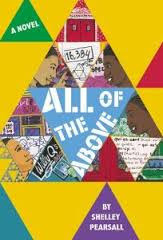Gr 5 Up—Flawed protagonist Peppi is fantastically imperfect in this middle school graphic novel. She is the new girl at Berrybrook Middle School and is having a hard time fitting in because of her struggles with social anxiety. The work opens with the young teen pushing away the first person who tries to help her, Jaime, and it only gets more awkward from there. A feud between Peppi's after-school art club and Jaime's science club springs up. Can the two groups stop fighting long enough to earn a spot in the school fair? Will Peppi overcome her social anxiety and apologize to Jaime? Will any of them feel comfortable enough in their own skins to have a good school year? The story is told with a clear, believable voice. Diversity is reflected in this average middle school setting, and there are characters from a variety of ethnicities and are differently abled. Chmakova is an adept storyteller and organically incorporates messages of kindness and understanding without being preachy. The placement of the text and images were carefully considered. The illustrations and lettering are playful, bright, and fun, in keeping with the tone of the work. Readers will connect with the relatable, complex characters. VERDICT A superb graphic novel that authentically depicts the naturally awkward adolescent years.—Julie Zimmerman, Brooklyn Public Library
Adorable! Great story and illustrations!






































